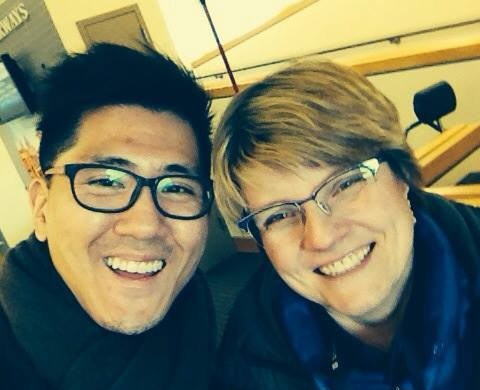We often forget that empathy is, first and foremost, a word.
Words mean different things to different people. Thus, one of the most difficult parts of writing my book has been to come to a resolution on what empathy is.
I browsed through what felt like a hundred different definitions of empathy. It all came down to a simple fact. Empathy is, first and foremost, a word. Not any word, but a word invented to explain an event.[1] An event observed and experienced by a philosopher.
The word “empathy” is a translation of a German word “einfühlung,” invented by Robert Vischer, a German philosopher. His goal was to explain how people can go from not experiencing a sense of unity (often referred to as “connection” or “oneness”) with a piece of artwork to experiencing it.[2] It’s like how Sir Isaac Newton invented the word “gravity” to explain how an apple can go from being above the ground to being on the ground.
Soon afterward, another German philosopher named Theodore Lipps entered the scene. He proceeded to expand the meaning of “einfühlung” to also explain how we experience the same sense of connection and oneness with another human being. A British psychologist named Edward Titchener then imported the word into the English language as “empathy.”[3]
As you can see, the word “empathy” has changed in meaning throughout history. I have no doubt that it will continue to do so. What will stay constant is the opportunity to feel as if we are connected or at one with an “other.” An “other” with which we previously felt disconnected, divided, or even at odds. Whether this happens for a moment or for a prolonged duration of time and whether that “other” is a piece of artwork or another person, the feeling is the same.[4]
I’m seeing popular articles being written to argue for or against empathy. They are well-intended. Those “against empathy” worry that we may do harm by being “for empathy.” Those “for empathy” feel the same way about being “against empathy.” Personally, I find arguing for or against empathy akin to arguing for or against gravity. Whether we like it or not, empathy is here to stay. What matters is how we leverage it and to what end.
When our primary mode of communication is through words, it’s easy to get caught up in a war of definitions. Yet, it is not the word “empathy,” but our ability to move from not experiencing a sense of connection or oneness with an “other” to experiencing it, that will make the most difference in our lives. No matter the route we take to navigate that journey or how difficult that journey may be, the fact that we can move there is what gives me hope for the future of our humanity.
I hope you’ll join me in not losing sight of this.
I invite you to discuss this further in our Facebook Group.
• • •
[1] Herwig-Lempp. Johannes. Explanatory Principle.
[2] Nowak, Magdalena. The Complicated History of Einfühlung.
[3] Titchener, Edward B. Lectures of the Experimental Psychology of Thought Processes, New York, Macmillian, 1909.
[4] Just to be clear, this is not to anthropomorphize pieces of artwork or to claim that they have minds like human beings. It simply means that when it comes to empathy, we’re talking primarily about our ability to have an experience of connection or oneness with an “other,” not merely our ability to analyze them. It is also not to imply that every single person on the entire planet can experience such connection or oneness. I have no way of proving that. There are also various individual differences in the kinds of “other” with which we can feel such connection or oneness. For example, many programmers feel such connection or oneness with computers. Not everyone can feel this.
Original article from Huffington Post / Photo credit to Vanna




